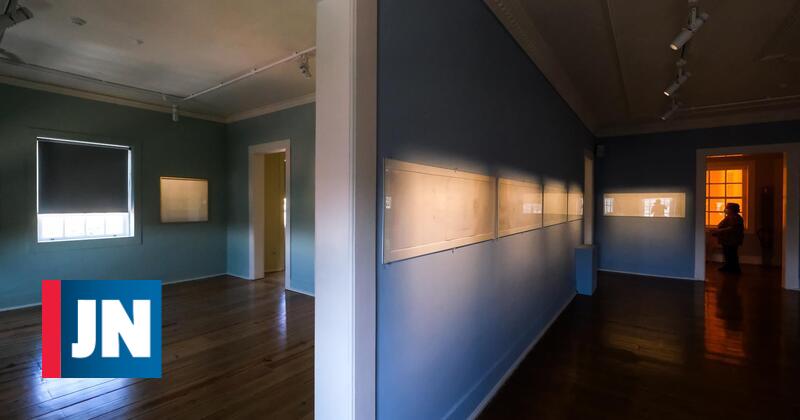Rui Moreira defends the new configuration of the space and reiterates his confidence in Nuno Faria, Artistic Director of Museo da Cidade. PS and PSD competition.
“No property has been destroyed, no business has been wasted, and nobody can accuse us of having no inheritance concerns,” argues JN, Rui Moreira, mayor of Porto, regarding the five-day controversy over the new composition of the The city’s former Romantic Museum.
“Simply put,” continued the culture consultant, “our vision of romance is not to see a house with paneled windows and exhibits displayed behind stalls, so that people imagine the lives of the rich or the nobility in the nineteenth century.”
There are those who do not see it this way, so there are already more than 1,500 subscribers to a petition calling for “the restoration of the interior decoration of the 19th-century Romantic Museum of Quinta da Maserinha”, where Carlos Alberto de Savoia lived. In 1849, the former king of Sardinia, who was defeated by the Austrian army, went into exile when he fell ill while passing through Porto. That’s why I rented that house that was owned by the Ferreira Pinto Pasto family. There he will die shortly.
In a year of local elections, both the Socialist Party and the PSD are protesting. “The reconfiguration scandalizes the city and disrespects Porto’s memory and heritage. The change has destroyed everything the museum represents until today,” in a statement released this Tuesday, the nomination of socialist Tiago Barbosa Ribeiro.
In the same sense, PSD candidate, Vladimiro Velez, said he was “shocked” by what he saw this morning, while visiting the space, which he said was “empty from its entire history”, preventing “the way the residents of Porto and those who visit us had to experience the environment.” at that time [romântica]He also criticized in statements to “Poro Channel” what he considers a political decision, “The erasure of history is part of the experimental culture of the current executive.”
Announcing the controversy
Controversy over Porto’s former Romantic Museum, now called “Extension of Romance – Museum of the City”, erupted last Friday, the day of the book fair’s opening, when a Facebook post announced that literary event: “If the former romance had known the Macieirinha Museum, we promise that this The new space has nothing to do with the place you once visited.
Within a few minutes, social networks failed to change and made the topic go viral.
Rui Moreira disavows the terms of the ad – “there was a communication problem at Ogura, which used a provocative tone, which justifiably provoked people” – but reiterates his confidence in the Museo da Cidade Artistic Director. “I take political responsibility for the great choice of Nuno Faria. He still deserves all my trust – he and the team.”
Nuno Faria, who took office in 2019, after managing, for six years, the José de Guimarães International Center for the Arts, in Guimarães, argues, in a lengthy interview with JN, that the bet is focused on “a more comprehensive space that is now truly devoted to the scrutiny of the Romanticism in the city in its various aspects, giving importance to real heroes, such as artists, writers and musicians, for example.”
For the rest, as the art historian points out, misunderstandings spread about the philosophy that space now obeys. “It is not about substituting contemporary artists or contemporary art with works from other times. It is about establishing a museum that engages with and engages with the times in which it exists, that is more dynamic, and permeable to new discourses and interests.”
In this sense, he continues, “We are interested in promoting a dialogue between eras and languages, between art and music, between writing and architecture, and creating a broader platform for fruition and discussion, which will begin at the end of this month. September with the musical program designed by pianist and teacher Sophia Lourenco, pianist and organist. Pedro Montero, which focuses on Porto authors from the Romantic period”.
In fact, two distinct topics sparked controversy: the indoor exhibition model and the misunderstanding of one of the properties opened by Rui Moreira in 2018, which then represented an investment of more than half a million euros, almost entirely funded by Europeans. funds.
The mayor explains, on the one hand, that the previous gallery had been open for three years and was not intended to be final; On the other hand, the money was not used in the collection but in the restoration of the house, specifically in the roof, windows, electrical panels and waterfalls.
He also heard JN, Camilo Rebelo, the architect in charge of the project, endorse this. “I’ve had an intervention in terms of access, inclusion (for people with reduced mobility) and lighting of the space. All this is left. What has been added is another step in the rehabilitation of the house and the city.”
The current controversy, states the author of the Musée Côa, is similar to the controversy that Alvaro Siza had in 1995, when the exhibition “The Order of Seeing and Saying”, opened in the Casa de Serralves. “The windows began to open, to which they were also taken, and it was scandalous. There, too, I took a step forward.”

“Infuriatingly humble analyst. Bacon maven. Proud food specialist. Certified reader. Avid writer. Zombie advocate. Incurable problem solver.”

